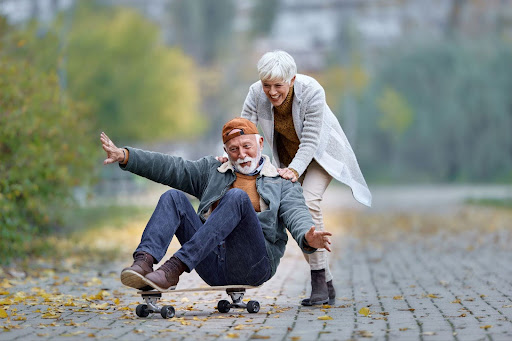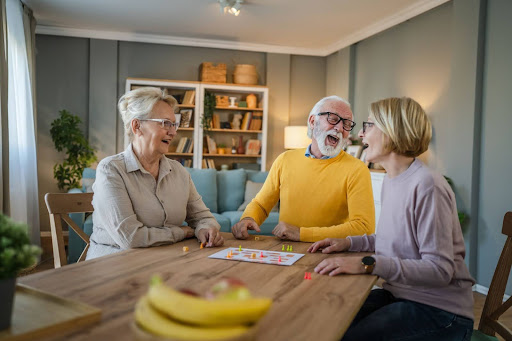
The Benefits of Walkable Neighborhoods: Why Choose Independent Senior Living
On the Move: Walkable Senior Living Neighborhoods
Sitting on a lush 48-acre campus, residents at The Heritage are pretty passionate about walking in these beautiful surroundings. The walking group gets out regularly to explore the grounds of The Heritage and the Greater Brentwood area. But did you know that walking and walkable neighborhoods, like The Heritage at Brentwood®, can have a positive impact on your quality of life?
Benefits of walking
Walking, as with almost any exercise, is great for cardiovascular health and weight control. And walking creates less stress on joints than higher-impact workouts. Regular walks at a moderate intensity can decrease your risk for high blood pressure and high cholesterol. Walking boosts your overall endurance, circulation — even your posture.
The reasons to walk don’t end with the important physical benefits. Walking has also been linked to higher levels of creativity, improved mood, lower anxiety and sharper memory, everything you want in an independent living lifestyle. In short, walking is kind of an all-natural wonder drug.
In this senior living community, residents have the opportunity to walk outside, so they reap the added benefit of getting vitamin D from sunlight. Vitamin D helps with calcium absorption, which supports strong bones. With the option of joining a walking group, residents can also enjoy chatting with friends while they get some exercise. Including a social component makes exercise more fun and encourages participants to stick to their walking routine.
Benefits of walkable neighborhoods
Before getting into the perks of walkable neighborhoods, let’s explain what makes a neighborhood walkable. According to walkscore.com, here are some different attributes that contribute to a community’s walkability:
- A center: A main hub where people gather. It could be a main street, a public space, or a central shopping area.
- People: For a neighborhood to flourish, it needs a large enough population to support businesses.
- Parks and public spaces: People can meet in communal recreation spaces to socialize and play.
- Pedestrian-friendly design: Buildings are close to the street, not tucked behind sprawling parking lots.
- Schools and workplaces: Both should be centrally located, so people can walk.
- Complete streets: Bicyclists, pedestrians, and transit should all be able to make use of neighborhood streets.
Since walking is so healthy on a personal level, it comes as little surprise that neighborhoods buzzing with foot traffic enjoy many positive opportunities as well. Walkability is especially appealing to anyone looking to rightsize and simplify their life.
Environmental:
The more people are able to walk to accomplish tasks, the less they drive, creating fewer emissions and therefore cleaner air.
Economic:
People who can walk to stores are more likely to support local business. As they walk by storefronts — with time and opportunity to peruse window displays — neighbors are more likely to stop in and shop. Also, the fewer community members drive, the lower their gas bills, and eventually neighbors may find they need fewer family vehicles.
Social:
A walkable neighborhood, where people feel safe strolling the sidewalks, promotes community involvement, expands social networks and fosters personal connections. When people get out in their neighborhoods more, they naturally feel a stronger affiliation with it and with their neighbors.
Here at The Heritage at Brentwood, these benefits are on display every day. The active independent living residents are constantly out and about, joining clubs, enjoying meals together, connecting with family, and contributing to make this a stronger, more vibrant senior living community. The connection to social life and the community at large plays a big role in making The Heritage at Brentwood such a wonderful place to retire.
Come by for a walk through the neighborhood. Contact a member of the team to see the lively independent living lifestyle at The Heritage at Brentwood.



